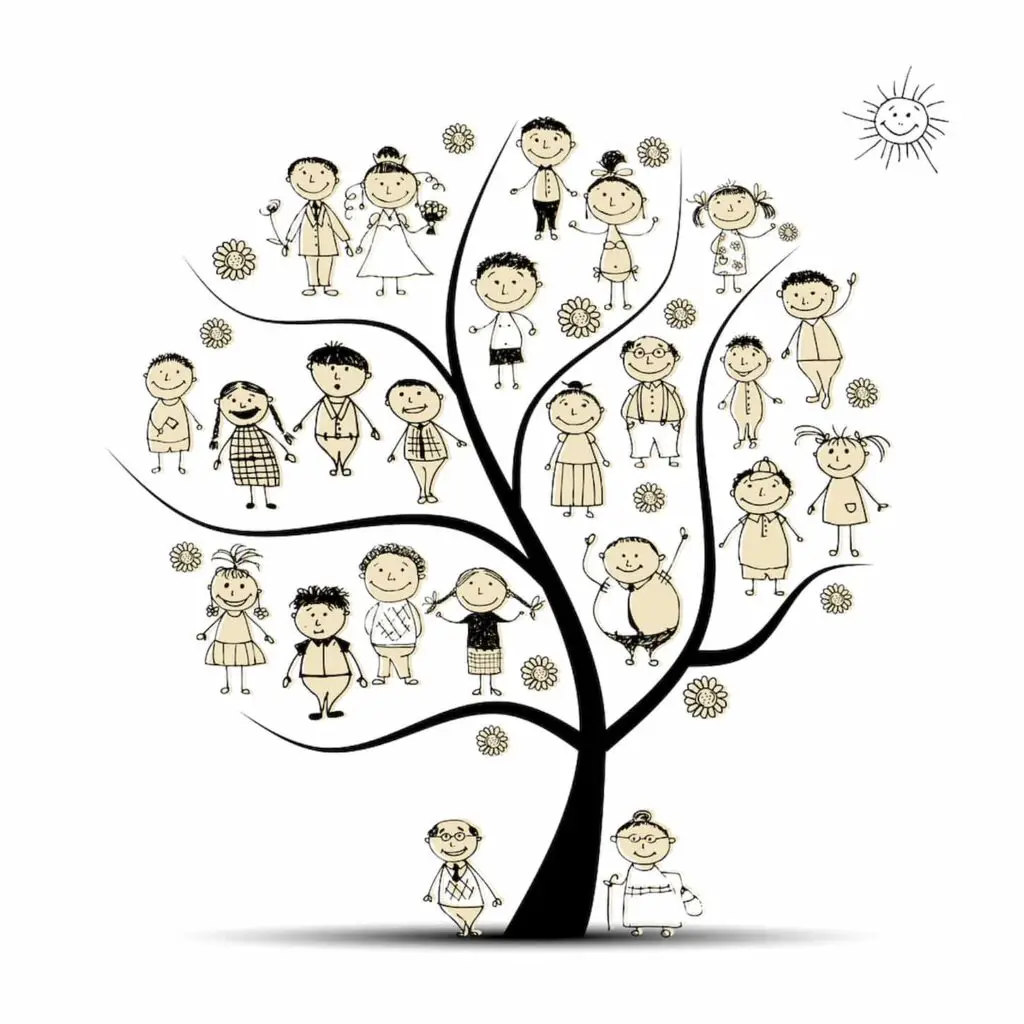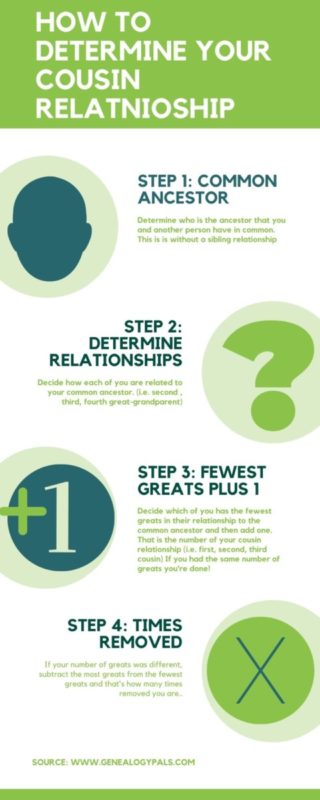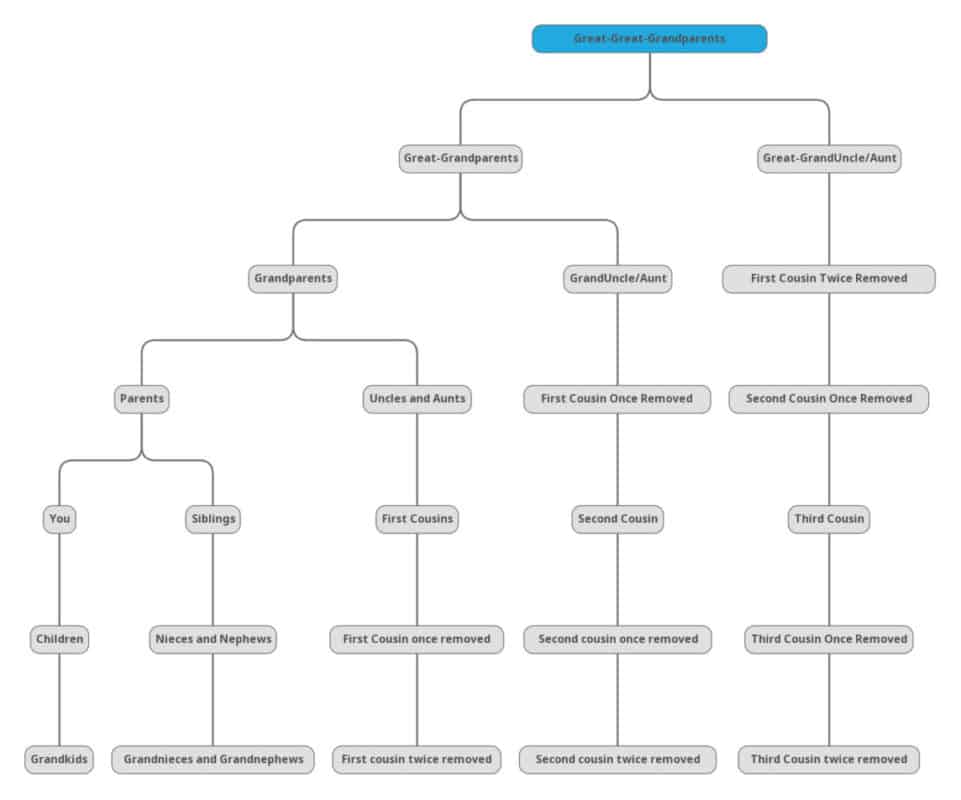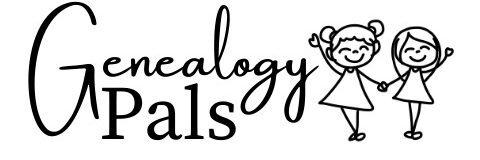Some of my best memories growing up involve my cousins. They’re amazing people and I’m lucky they’re part of my family – but where do they fit in my family tree? How do family trees work with cousins?
Cousins aren’t traditionally included in a family tree. However, expanded family trees can be built to include a wide variety of other family relationships – including cousins. Here is what you need to know about cousins and family trees – including how to calculate your exact relationship.
Ready to expand your family tree – and include your cousins? Keep reading – and we’ll go over everything you’ve been wondering about!

Where Your Cousin Belongs on Your Family Tree
So where do your cousins belong on the tree? Well, that depends on if you want a traditional pedigree chart or an expanded (and more inclusive) one.
If you’re going for a traditional, direct-line ancestor pedigree chart, your cousins won’t be included. This is because, traditionally, cousins haven’t always been included in a family tree. This is for several reasons – the main one being that pedigree charts usually only show immediate family members and direct line ancestors. Other reasons include the fact that it was too overwhelming to add that many people to a family tree. This was more the case when family trees were kept on paper – or at the start of the digital era.
However, with developments in technology, it’s getting easier (and more common) to build out your family tree in every direction. That means it’s getting easier to include cousins – and to navigate a family tree to see more relationships and members.
So if you’d rather have an expanded tree, go for an online pedigree chart. It’ll be far more comfortable than trying to write this out by hand – trust me! Then, include your cousins where they naturally belong – with their immediate family members. So if your cousins are your brother’s sister’s children, add them there – with your aunt and her spouse listed as their parents.
How to Determine Your Relationship with a Cousin
While it’s easier (and technically accurate) to call any relative a “cousin,” sometimes it’s fun to figure out the actual relationship that you share with your cousin. That way, you know precisely how you’re related. But then there are all sorts of other terms (and numbers) involved. And, to many people, it’s understandable that trying to figure out the exact relationship is terrifyingly tricky and too much math.
So let’s remove the terror and trickery from calculating how you’re related to your cousins. Instead, here is how to calculate a cousin relationship – the simple and straightforward (and easy) way. We learned this method from Family Search – one of our favorite genealogy programs.
- Find a shared ancestor – the set of grandparents that the two of you have in common. There may be many “greats” involved – that’s okay. You want a grandparent that you share – and not a sibling relationship.
- Decide how each of you is related to the common ancestor.
- Count the “greats,” if any. The fewest number of “greats” between the two of you plus one equals the number of cousins you are.
- If that number is not the same, that’s okay. Count the “greats” – and use the lower number of the two for the cousin relationship. Then, take the difference between the steps to get to the common ancestor to find the number of “times removed” your cousin’s relationship is from that person. (Don’t worry – we’ll talk about what this means later.)
- Add the two parts together to get an answer of Xth cousins, Y-times removed.
Or if you prefer an infographic – here you go, friend.

To find out how to download a copy of this for your own personal use, keep reading to the end of this article. Or you can use this article’s table of contents to jump ahead to the appropriate section.
Ready for some examples to make this clear? Let’s do this.
Breanne recently moved into a new house and found out that a neighbor down the street and she share a common ancestor. Pretty cool, huh? In any case, they wanted to find out exactly how they are related. As it turns out, their grandpas are brothers – which means the common ancestor is the brothers’ parents (or the great-grandparents).
Now let’s count the greats: 1. Now, we add one to that to get the cousin relationship degree: 1+1=2. Breanne and her neighbor are 2nd cousins.
How would Breanne be related to this neighbor’s mom? Well, the common ancestor is still Breanne’s great-grandparent – but that same ancestor is this other woman’s grandparent. The number of greats is not the same. Comparing 1 great to 0 means we’ll use the lower number (which is 0) to calculate the cousin relationship. Using 0+1=1 means that Breanne and this other lady are 1st cousins – but now we need to calculate how far “removed” they are.
Now we’ll take Breanne’s single great and subtract the 0 greats of the other lady to get 1 – which means once removed. So Breanne is a first cousin (once removed) of her neighbor’s mom.
Here’s another example – it turns out that Breanne and I are (very distantly) related. We’re 10th cousins once removed. Pretty cool, huh? We figured it out using FamilySearch’s app – because that was easier than poring through all of our records to discover that on our own.
Here are some of the relationship calculators and popular software programs you can use to figure out how you’re related to someone.
- FamilySearch’s app – just look for a button or link that says “View My Relationship.”
- FamilySearch’s app also has a “Find Relatives Around Me” option that’ll search for others using the app around you and how you’re related. The downside is that everyone needs to have the app open and have that part of it running – or it won’t work.
- Ancestry.com has your relationship to a person above the fold on each individual person’s page.
- MyHeritage.com also tells you about your relationship with a person on profile pages.
- Non-web-based software like RootsMagic will calculate any two relationships in your tree – not just your own. In RootsMagic, you can find it in the Tools dropdown menu and then click on “Relationship calculator.”
- This Search for Ancestors site has a great calculator tool on it, though it does require manual input.
- RelativeFinder.org (part of BYU’s Family History Technology Lab) has a really cool and automatic way to find relatives around you. It pulls your tree from FamilySearch.org (with your permission) – and then you can compare results to public figures, historical figures, athletes, presidents, or others who consent to share their data to find relationships.
Personally, I really like the RelativeFinder.org option. It lets you create or join a variety of groups – so that you could compare how you’re related with as few (or as many) people as you’d like. Using that program, I’m able to see that I’m related to a lot of really cool figures, including the following.
- Abraham Lincoln (6th cousin 5 times removed)
- Amelia Earhart (8th cousin 3 times removed)
- Janis Joplin (8th cousin once removed)
- Lucille Ball (9th cousin twice removed)
- Mickey Mantle (9th cousin twice removed)
- Florence Nightingale (7th cousin 5 times removed)
- C. S. Lewis (8th cousin 5 times removed)
- and the list keeps going.
Pretty cool, right? Both RelativeFinder.org and FamilySearch.org offer free accounts – so it’s a fantastic resource! But that begs the question – are cousins at the 3rd, 4th, or beyond level considered family – or not?
3rd and 4th Cousins: Considered Family or Not?
Are 3rd and 4th cousins (and beyond) considered family? Again, it depends. From a legal standpoint, they aren’t your relatives, no. But otherwise, it’s a bit of a personal opinion or standpoint kind of thing.
According to this legally-minded site, a family member is “to the second degree of consanguinity,” which means that you share a blood relationship within the limits of having the same grandparents. Sharing parents would be within the first degree of consanguinity, or blood.
Outside of the legal definition, the answer to this question is a matter of opinion and personal preference. Breanne is of the opinion that anyone she can link to her family tree (beyond 3rd or 4th cousins) qualifies as a “distant cousin.”
For the most part, I agree with Breanne. In my opinion, anyone who’s distantly enough related to be legally married probably oughtn’t to call each other a close cousin – I’d definitely stick with “distant cousin.” Or if you do marry that person, I’d probably quit calling them a cousin – and call them your spouse.
However, even third and fourth cousins could still be close enough to each other – or at least have memories of their common ancestor. And if your families have both attended the same family reunions, then it’s very possible that you’ve been able to build up a meaningful relationship – even if the law doesn’t consider you closely (or at all) related.
In theory, we could consider all of humanity one big family – since at some point all of humanity may share some common ancestor. And if we want to get deeply philosophical for a moment, then this mindset of us all being a family could really help unite our world and help each other.
For more reading on this mindset, make sure you check out our post on DNA, youth, and a family history mindset and AJ Jacob’s website – especially the 2015 Global Family Reunion.
Even if we aren’t all exactly related – wouldn’t things be better if we treated each other like we were? That’s why we think it’s a great idea to teach this idea – and to support programs that promote global unity.
Marrying Distant Cousins: What is too Close?
If you’re wanting to marry a cousin, you’re going to need to know two things.
- How closely you’re related to your cousin/potential spouse?
- What your local laws say about marrying your intended.
You’ll want to know how closely you’re related to your potential spouse for several reasons. The most important one has to do with genetics – and the potential for genetic consequences in your children.
The strongest consequence would be if both you and your closely-blood-related spouse carry a recessive gene – that could then manifest in the health of any of your children together.
According to this JSTOR article, the risk of genetically-linked recessive diseases manifesting in the children of married first cousins can be 6% – double the expected 3% in the general population. These numbers could be higher within a smaller community – especially if multi-generational cousin marriages are common. (For example, see historical monarchies and dynasties who kept things “in the family.”)
Next, you’ll also need to know what your local laws say about marrying close relatives. Many states prohibit too-closely-related marriages to prevent genetic or recessive diseases from manifesting. However, each state differs on what “too close to getting married” means.
In most states, the general rule of thumb is it’s perfectly legal to marry your second cousin (where you share the same great-grandparents). Some states allow first cousins to marry. Some of the states that allow for these more closely blood-related marriages do put stipulations on the marriage – so make sure you know what your local laws say and if there are any circumstantial requirements.
And remember this, too: just because close relatives don’t marry as commonly today, this is a newer and distinctly American trend. Even 100 years ago, marrying a close relative wasn’t uncommon or weird – in any country. Einstein and Darwin married their respective first cousins. John F. Kennedy’s grandfather married a second cousin. It’s only in more modern times – and in the United States – that marrying close cousins has become a legal concern.
In going through Breanne’s research for this article, I was kind of surprised to learn that this (not marrying cousins) was an American trend – and that most other countries don’t put legal limitations on marrying closely related cousins. And while it’s weird to me (because I was raised with the idea that marrying close cousins wasn’t acceptable), it’s not a taboo for most of the rest of the world.
What Does “Once Removed” Mean?
The degrees “removed” (of once removed, twice removed, three times removed, etc.) tells you the generational differences between you and another family member.
For example, first cousins are the same number of generations away from their shared ancestors (their grandparents) – so they aren’t removed from each other.
A first cousin once removed, however, means that they have one fewer generation to step to the shared ancestor. So in this example, the first cousin (once removed) steps to the shared ancestor of their parents – whereas you have two steps to get to your grandparent (the shared ancestor). So you may be cousins, but there’s a generational difference – hence the “removal.”
Cousin Chart and Cousin Infographic – Free Downloadable!
Want to have a handy cheat sheet so you can calculate your relationship easier? Want to get the Cousin Relationship infographic? Our newsletter subscribers get free, exclusive access to our whole library of goodies – including both of these.
You’ve seen what the cousin relationship infographic looks like, but here is a sneak peek at part of the cousin, though. That way, you can see some of its awesomeness.

The downloadable form not only has this but also the written-out steps – so you’ll never again wonder how you’re related to that cousin. Or how many times removed you are from each other. To get instant access to this free download (and all of our others), subscribe to our newsletter today.
Related Questions
How Can We Celebrate Family History at a Family Reunion? Celebrate your family history at a reunion by adding subtle or more outright references to your heritage, culture, family members, or whatever else. For more specific ideas on family history-themed family reunions, read our complete guide on it here.
How Can I Help My Younger Family Members to Enjoy Genealogy? Help younger family members learn to enjoy genealogy by finding shared interests or character traits. Here are 11 of our favorite ways to help youth love genealogy.
What is a Pedigree Chart? A pedigree chart is a visual representation of yourself, your ancestors, and how you’re related through descent. It has names, dates, and other vital information on it for quick reference. For more information, read our article on 13 things you need to know about pedigree charts.
Resources
When learning about genealogy, it’s important to learn from various reputable sources. These are the sources used in this article and our research to be more informed as genealogists.
- “Can You Marry Your Cousin?” Eastman’s Online Genealogy Newsletter, 27 Oct. 2014, blog.eogn.com/2014/10/26/can-you-marry-your-cousin/.
- Richard, et al. “Cousin Chart-Family Relationships Explained • FamilySearch.” FamilySearch Blog, 16 May 2020, www.familysearch.org/blog/en/cousin-chart/.
